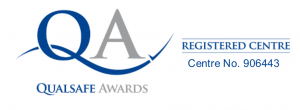LEVEL 2 – HEALTH AND SAFETY IN THE WORKPLACE
Achievement of this regulated qualification will enable learners to work safely and to recognise and deal with hazards in the workplace. The aim of the qualification is to provide candidates with knowledge of the basic health and safety practices essential in the workplace. This includes the hazards and risks along with the relevant legislation, and ensures awareness of cost-effective, practical control methods.
Our courses are designed to deliver the highest standard of development and training, all of our qualifications are accredited and certified by one of the leading suppliers of compliance, work-based learning and apprenticeship qualifications.
COURSE DURATION?
1 day
PRICE:
Please contact us for prices. We promise to beat any like-for-like quote.
COURSE DATES?
We’re currently organising dates for this course but please register your interest, a Titan representative will be in touch. Thank you.
We will only use this information to contact you regarding this course, we will not retain your information for marketing purposes. If you would like more information then please read our privacy policy
WHO SHOULD ATTEND?
This qualification is designed for those learners wishing to gain a nationally recognised qualification in health and safety.
Achievement of this regulated qualification will enable learners to work safely and to recognise and deal with hazards in the workplace. The aim of the qualification is to provide candidates with knowledge of the basic health and safety practices essential in the workplace. This includes the hazards and risks along with the relevant legislation, and ensures awareness of cost-effective, practical control methods.
This qualification is applicable for any private or public sector working environment and provides employees with an awareness of their own safety, as well as the safety of customers, contractors and members of the public.
This Ofqual approved qualification has been developed specifically for insertion into the Qualifications and Credit Framework with full support from Proskills. It is therefore fully compliant with industry and regulatory standards as well as being recognized by the Health and Safety Executive, auditors and other enforcement officers.
The objective of the qualification is to prepare learners to progress into further/higher level training.
WHAT YOU WILL LEARN?
Upon completion of the course the learner will:
- Understand roles and responsibilities for health, safety and welfare in the workplace
- Understand how risk assessments contribute to health and safety
- Understand how to identify and control the risks from common workplace hazards
- Know the procedures for responding to accidents and incidents in the workplace
This section of the specification expands on the assessment criteria defined in the unit and includes suggested content that a training course should cover in order to adequately prepare learners for the assessment.
Understand roles and duties for health, safety and welfare in the workplace
- Employers’ and employees’ duties relating to health, safety and welfare at work:
- Legal responsibilities of employers and employees as required by the Health and Safety at Work etc. Act Sections 2, 3, 7 and 8
- Employees to follow the instructions given by their employer to keep safe and healthy working environment
- Employees to look after the health, safety and welfare of themselves and others
- Provide a healthy and safe place to work
- Ensure as far as is reasonably practicable a safe place to work
- Provide safe plant and equipment
- Safe systems of work
- Safe handling, storage and transport of articles and substances
- Information, instruction, training and supervision
- Safe access and egress
- Safe working environment with adequate welfare facilities
- The consequences for non-compliance with health and safety legislation:
- Enforcement of health and safety legislation
- Powers of enforcement officers
- Prohibition notices
- Improvement notices
- Letters from the HSE
- Prosecution
- The requirements for training and competence in the workplace:
- Definition of competent persons
- Benefits of training and why it is required:
- To comply with the law
- To ensure staff have the knowledge to complete a task
- To ensure competent staff
- To ensure employees have the ability to use particular equipment in the workplace
- To keep employees safe whilst at work
- The ways in which health and safety information can be communicated:
- Safety signs – types, shapes and colours
- Toolbox talks
- Team meetings or briefings
- Safety representatives
- Company newsletters
- Emails
- Posters and notices
- Verbal communication
- Safe systems of work
- Risk assessments
Understand how risk assessments contribute to health and safety
- The terms ‘hazard’ and ‘risk’:
- Definitions of hazard and risk
- Examples of hazards and risk ratings
- The process for carrying out a risk assessment:
- Definition of a risk assessment
- Definition of a control measure
- The five step process for risk assessment
- How risk assessment can be used to reduce accidents and ill health at work:
- Risk control hierarchy
- Benefits of good health and safety in the workplace
- Identifies hazards and creates awareness
- Puts in place control measures to protect employees
- Prioritises highest risks for action first
- Provides information, instruction and training for employees
- Monitoring and health surveillance
How to identify and control the risks from common workplace hazards
- The hazards that may be found in a range of workplaces:
- Manual handling
- Slips, trips and falls
- Working at height
- Machinery
- Vehicles
- Fire
- Electricity
- Hazardous substances
- Asbestos
- Stress
- Workplace violence
- The workplace (temperature, design, housekeeping, lighting, ventilation, doors and windows)
- Workstation and task design
- How hazards can cause harm or damage to people, work processes, the workplace and the environment:
- How the hazards can realise their potential in the workplace
- Identifying what harm can occur from workplace hazards
- The principle of the risk control hierarchy:
- The process of determining suitable risk control measures:
- eliminate the task if practicable
- substituting harmful substances
- engineering controls
- safe systems of work
- training, information, supervision
- personal protective equipment
- The process of determining suitable risk control measures:
- Examples of risk controls for common workplace hazards:
- Machine guards
- Barriers and enclosures
- Fire detection and extinguishing
- Mechanical hoists and safe lifting techniques
- Design and layout
- Good housekeeping
- Effective and safe storage
- Electrical safety devices
- Personal protective Equipment
Know the procedures for responding to accidents and incidents in the workplace
- The common causes of workplace accidents and ill health:
- Difference between workplace injury and workplace ill health
- Why accidents happen – human, environment and occupational factors
- Common accidents and ill health in the workplace
- HSE statistics
- The actions that might need to be taken following an incident in the workplace:
- Evacuation
- Following procedures
- Serious injury procedures and accident reporting
- Evacuation procedures
- Fire procedures
- Awareness of arrangements for:
- Gas leak procedures
- Flood procedures
- Electric shock
- Bomb procedures
- The arrangements that should be in place in a workplace for emergencies and first aid:
- First aid personnel requirements
- Contents of first aid kits
- Other first aid equipment, such as defibrillators
- Why it is important to record all incidents, accidents and ill health:
- Accident triangle
- Reporting near misses
- Accident books
- Requirements under RIDDOR
- Records available to investigate incidents to prevent a recurrence
ASSESSMENT
The qualification is assessed by a multiple-choice question examination. This method of assessment is an end of course exam and must follow the Titan and Invigilation Guidelines. During the exam learners are required to choose one of the prescribed options to answer a set examination questions. This examination contains 20 questions that must be completed within 45 mins. Successful learners will have to demonstrate knowledge and understanding across the qualification syllabus and achieve a minimum pass mark of 12/20 (60%). Completed examination papers should be returned to Titan for marking and results will then be provided to the centre afterwards.
Candidates need a basic command of English (defined as Level 2). So whilst we are often able to provide support to people who for example do not have English as a first language, our ability to do so is limited by the time available and the number of people who require assistance, although we may be able to make special arrangements if requested in advance. Please contact us if you need any guidance.
YOU’LL ALSO RECEIVE…
Each learner will receive a Health and Safety handbook.
CERTIFICATION
This qualification is designed for those learners wishing to gain a nationally recognised qualification in health and safety.
This Ofqual approved qualification has been developed specifically for insertion into the Qualifications and Credit Framework with full support from Proskills. It is therefore fully compliant with industry and regulatory standards as well as being recognized by the Health and Safety Executive, auditors and other enforcement officers.


